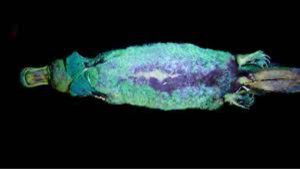Lichens
Lichens are organisms that grow in a variety of climates and can look very different. Even apparently barren areas can be colonised by lichens and in all they play an important role in helping our environment. Don Burke recently spoke to Dr David Eldridge from the Department of Land and Water Conservation to find out more about lichens.
What are lichens?
Lichens (pronounced LY-kens not litchens) are slow growing fungi which exist in a symbiotic union with algae. They may be found growing on rocks, fences and in gardens. Lichens can grow in many climates from deserts to tropical rainforests and even in antarctica. Their appearance changes with their surroundings and the conditions. An example of this is the lichen in its natural state, which is quite dry and prickly but can quickly change to a soft and spongy material with the addition of water or dew.
Environmental indicator
Lichens are a good indicator of a healthy environment. They absorb pollutants from the air. In areas of nuclear testing, such as Maralinga in South Australia, lichens the size of a match head absorb and retain plutonium, as well as stabilising the soil surface. This reduces the risk of humans ingesting it in the dust.
Lichens have also been used as a food source during famines, as dyes by the Navaho indians, and as drugs for the treatment of lung and skin disorders. Reindeer feed on lichens.
Roof lichen
One area where lichens can flourish is on roofs of houses. People become concerned about lichens on their roofs but David Eldridge says lichens on the roof are not dangerous. It may take two or three hundred years for any damage to occur. Lichens that grow on roofs (there are several different types) do nothing more than cover the tiles. They provide colour and texture, and may help insulate your home.
Pollution and human damage are hard on lichens. Because they are slow growing, it will naturally take time for the lichens to come back if you’ve created a new rockery or garden. If you are building and there are lichens that are going to be destroyed, move them to a similar environment where they’ll gradually re-establish. Kids may gain some fun and knowledge by trying to establish their own lichen garden.
Further reading
A Practical Guide to Soil Lichens and Bryophytes of Australia’s Dry Country by David Eldridge and Merrin E. Tozer (1997, Department of Land and Water Conservation) ISBN 0731303024. $14.95 + $2.00 postage.
To obtain a copy of this book contact the Information Centre at the Department of Land and Water Conservation on (02) 9228 6415 or fax (02) 9228 6458.



